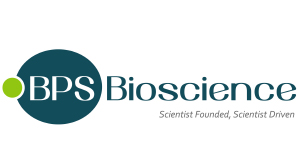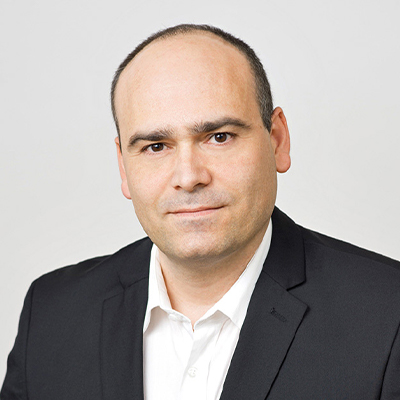p70S6Kb, GST-tag Recombinant
p70S6Kb, GST-tag Recombinant
Artikelnummer
BPS40146
Verpackungseinheit
10 µg
Hersteller
BPS Bioscience
Verfügbarkeit:
wird geladen...
Preis wird geladen...
Products from BPS Bioscience require a minimum order value above 400€
Encompassing Amino Acids: full length
Application: Useful for the study of enzyme kinetics, screening inhibitors, and selectivity profiling.
Assay Conditions: 5 mM MOPS, 2.5 mM β-glycerophosphate, 5 mM MgCl2, 1 mM EGTA, 0.4 mM EDTA, 0.05 mM DTT, 2 mM ATP. Incubate p70S6K with 0.2 mg/ml RSK-sub peptide substrate and 50 ?M [33P]-ATP at 30°C for 15 minutes, then spot reaction on phosphocellulose paper, fix in 1% phosphoric acid, and assay with a scintillation counter.
Background: p70S6Kb is a member of the RSK (ribosomal S6 kinase) family of serine/threonine kinases and is activated by mitogenic stimuli, including growth factors, cytokines, and phorbol esters. p70S6Kb contains 2 nonidentical kinase catalytic domains and phosphorylates the S6 ribosomal protein and eucaryotic translation initiation factor 4B. Phosphorylation of S6 leads to an increase in protein synthesis and cell proliferation. PI3 kinase pathway and mTOR are involved in the activation of p70S6Kb but other pathways can also activate this target protein.
Description: Recombinant human p70S6Kb, also known as RPS6KB2, STK14B, KLS, P70-beta, or SRK, GenBank Accession No. BC_000094, fulllength with an N-terminal GST tag and expressed in a baculovirus-infected Sf9 insect cell expression system. MW = 85 kDa.
Format: Aqueous buffer solution
Formulation: 50 mM Tris-HCl, pH 7.5, 150 mM NaCl, 0.25 mM DTT, 0.1 mM EGTA, 0.1 mM EDTA, 0.1 mM PMSF, 25% glycerol.
Genbank: BC000094
Host Cell Line: Sf9 cells
Purity: ≥90%
Storage Stability: At least 6 months at -80°C.
Tags: N-terminal GST-tag
Uniprot: Q9UBS0
Warnings: Avoid freeze/thaw cycles.
Biosafety Level: Not applicable (BSL-1)
References: 1. Gout, I. et al: Molecular cloning and characterization of a novel p70 S6 kinase, p70 S6 kinase beta containing a proline-rich region. J. Biol. Chem. 273: 30061-30064, 1998.
2. Saitoh, M. et al: Cloning and characterization of p70(S6K-beta) defines a novel family of p70 S6 kinases. Biochem. Biophys. Res. Commun. 253: 470-476, 1998.
Encompassing Amino Acids: full length
Application: Useful for the study of enzyme kinetics, screening inhibitors, and selectivity profiling.
Assay Conditions: 5 mM MOPS, 2.5 mM β-glycerophosphate, 5 mM MgCl2, 1 mM EGTA, 0.4 mM EDTA, 0.05 mM DTT, 2 mM ATP. Incubate p70S6K with 0.2 mg/ml RSK-sub peptide substrate and 50 ?M [33P]-ATP at 30°C for 15 minutes, then spot reaction on phosphocellulose paper, fix in 1% phosphoric acid, and assay with a scintillation counter.
Background: p70S6Kb is a member of the RSK (ribosomal S6 kinase) family of serine/threonine kinases and is activated by mitogenic stimuli, including growth factors, cytokines, and phorbol esters. p70S6Kb contains 2 nonidentical kinase catalytic domains and phosphorylates the S6 ribosomal protein and eucaryotic translation initiation factor 4B. Phosphorylation of S6 leads to an increase in protein synthesis and cell proliferation. PI3 kinase pathway and mTOR are involved in the activation of p70S6Kb but other pathways can also activate this target protein.
Description: Recombinant human p70S6Kb, also known as RPS6KB2, STK14B, KLS, P70-beta, or SRK, GenBank Accession No. BC_000094, fulllength with an N-terminal GST tag and expressed in a baculovirus-infected Sf9 insect cell expression system. MW = 85 kDa.
Format: Aqueous buffer solution
Formulation: 50 mM Tris-HCl, pH 7.5, 150 mM NaCl, 0.25 mM DTT, 0.1 mM EGTA, 0.1 mM EDTA, 0.1 mM PMSF, 25% glycerol.
Genbank: BC000094
Host Cell Line: Sf9 cells
Purity: ≥90%
Storage Stability: At least 6 months at -80°C.
Tags: N-terminal GST-tag
Uniprot: Q9UBS0
Warnings: Avoid freeze/thaw cycles.
Biosafety Level: Not applicable (BSL-1)
References: 1. Gout, I. et al: Molecular cloning and characterization of a novel p70 S6 kinase, p70 S6 kinase beta containing a proline-rich region. J. Biol. Chem. 273: 30061-30064, 1998.
2. Saitoh, M. et al: Cloning and characterization of p70(S6K-beta) defines a novel family of p70 S6 kinases. Biochem. Biophys. Res. Commun. 253: 470-476, 1998.
| Artikelnummer | BPS40146 |
|---|---|
| Hersteller | BPS Bioscience |
| Hersteller Artikelnummer | 40146 |
| Verpackungseinheit | 10 µg |
| Mengeneinheit | STK |
| Wirt | Insect |
| Produktinformation (PDF) | Download |
| MSDS (PDF) |
|

 English
English















